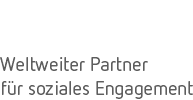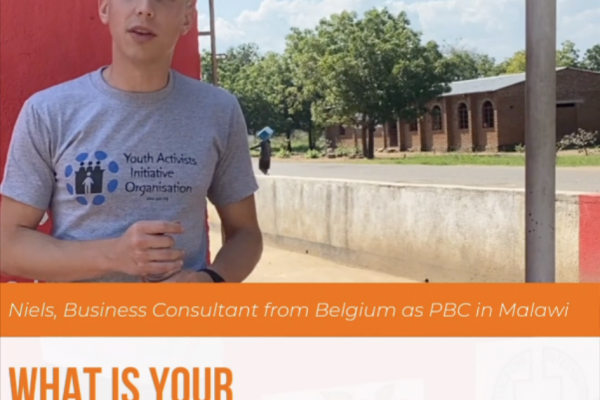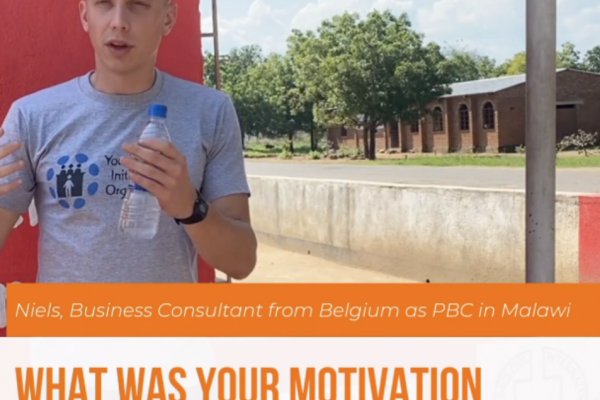Pro bono is booming: More and more companies are getting involved for good
We spoke with a broker between worlds, a foundation spokesperson, a volunteer creative, and the communicator of a social club that got free coaching.
Claudia Leißner is the managing director of Proboneo, a “two-way marketplace” in Berlin that brings professionals and executives together with nonprofit organizations to provide their respective expertise free of charge.
Ms. Leißner, why do companies that want to engage pro bono and organizations that are looking for support need a broker at all?
Claudia Leißner: For one thing, someone needs to give the issue a name. Volunteering and pro bono work by companies have been around for a long time in Germany, but they don’t systematically see it as a resource. And on the nonprofit side, it’s often hard to even say from the inside what they’re missing. It often takes someone looking from the outside to ask questions that have proven effective in getting to the heart of the problem.
Which side of the projects calls you more often?
Whether it’s a company or an organization – that roughly balances out. We can start from both sides. Callers from the business world often don’t know what’s needed and what makes organizations tick. And after donation scandals, there was a lot of uncertainty. There are still too few answers in the search for new engagement opportunities.
Does pro bono tend to decrease in your experience?
No, but to. Otherwise we wouldn’t exist (laughs). There is an extremely high demand, and the CSR wave is opening a new window. Companies are increasingly looking for answers but not finding them. That’s why we need a broker who can channel. In twenty years, when everyone has learned how to do pro bono, we won’t be needed anymore.
So your ultimate goal is to abolish yourself?
Exactly.
Animal welfare, nature, participation, children, health – which social trend topics are currently in the air?
An old fundraising rule says: children’s and animals’ eyes always go, because the corresponding projects don’t need so much explanation. Or: in winter, homeless people are a bigger issue than in summer. But right now we are experiencing a wave on the topic of refugees, this is simply due to the current news situation. In general, meta-topics are increasingly difficult to communicate. Especially organizations that work into the system are more complicated to explain. The misconception that one hundred percent of my donations should always arrive directly has also caused a lot of damage: After all, you don’t push the hundred euros that the donor has given into the hand of the starving child; instead, the donation goes into the structures that are supposed to make a difference. It is therefore all the more important that the overhead of an organization is well filled. Only then does the rest work.
Who calls you more often, public relations staff or human resources?
In our case, it’s almost always someone from the HR or CSR department. The callers are driven by the desire to have an internal impact. Public relations usually come second.
So is this more of an attitude issue?
Yes, and many companies say: “We first have to change internally in order to bring employees along more strongly for a commitment”. Today, companies want more, they want to strengthen their internal employer brand. Those who have been doing this for a few years see clear connections there, because they strengthen employee satisfaction and image values internally. For example, a large Dax company has included the question “What does our subcompany or a particular department do about CSR?” in their annual employee survey. So far, they’ve done poorly, but now there’s demand. And the management board supports it.
What is the worst thing organizations do in pro bono engagements?
They must not simply view engagement as a takeaway. Because they have to plan exactly what they want to learn – and also check the results in a measurable way.
And what mistake should supporting companies not make?
An absolute no-go is when they see themselves as great experts who help the poor, non-profit organization to finally professionalize itself. After all, these organizations often work much more efficiently, with fewer resources and much more passion than many a department in a large company. So they can also learn from their partners. Expertise alone is of no use if I can’t manage to listen.
What is the lowest common denominator of successful collaborations?
Focus. The partners should rather take on one concrete thing and do it right, instead of wanting too much or starting several things at the same time. Both sides should think clearly in terms of end products, because that is what remains perceptible in the end.
Companies also want to be visible. Christiane Biedermann, head of press and communications at Stiftung Aktive Bürgerschaft, knows how they ideally carry out pro bono assignments: “Employees now often expect more from their employer than ‘just’ a job,” says the deputy head of the BdP’s NGO specialist group. “They are looking for meaningful work and a successful work-life balance.”
This is precisely where pro bono work offers opportunities, because it offers new perspectives in a different, sometimes unfamiliar environment, conveys satisfaction and appreciation, since employees can use their professional expertise to help others or make a difference – and this benefits nonprofit organizations and ultimately society as a whole. “This also motivates people in their everyday work and benefits companies,” says Christine Biedermann. “Two things matter here: Pro bono campaigns or corporate volunteering programs are not a nice-to-have, but an integral part of CSR activities. Managers should lead by example, taking into account expectations and lifestyles of both sides, those of the nonprofit organization and those of the employees. This increases acceptance and impact.”
The example of “Nachtschicht Berlin” (Night Shift Berlin), a project in which employees from the creative industry make their services available to non-profit organizations free of charge for one night, shows how this can work. Within a few hours, concrete communication measures are created for a good cause.
Ms. Conradt, you are one of the organizers of the night shift. Why did you want to get involved socially?
Annette Conradt: I’ve been working in the creative industry for 26 years now. It’s a great profession, but you can also accuse the industry of superficiality. In times when four people fly halfway around the world just to make sure that a drop with a crown lands correctly in the coffee cup during a shoot, I wanted to do something meaningful.
And how did the specific pro bono idea come about?
At a dinner with my boss Michael Camici and Reinhard Lang from the UPJ network. He had gotten to know the project “8 Hours Overtime for a Good Cause” on a trip to Holland. We spontaneously decided to help in Germany as well. But we had no idea about the logistics and were very happy when the congress agency PCMA got involved and supported us with the location, electronics and catering. For the press work, the PR agency GoPublic came on board. In the end, we were able to use rooms of the “Tagesspiegel” and Mövenpick provided food and drinks free of charge along with five men for the service – the CEO was even there in person and wants to be there again with his team in 2016.
Did the creative people also participate enthusiastically right away?
When you ask a creative person, “Wouldn’t you like to work with me on Friday night?”, many of them initially say no in view of the twelve-hour days and children. Back then, most of them only came thanks to personal contacts and a lot of good coaxing (laughs). But on the night itself, the adrenaline helped so much as a creative drug that we managed to do things in just a few hours that would otherwise have taken days. In the morning, everyone was dead tired but happy.
Comments
Search
Kategorien
- Corporate Volunteering (16)
- CSR (4)
- Events (42)
- News (112)
- Press (13)
- Press Release (6)
- Publications (7)
- Pro Bono (21)
- Volunteer Reports (40)
- Volunteering (14)
- YEAH (1)








Recent Comments